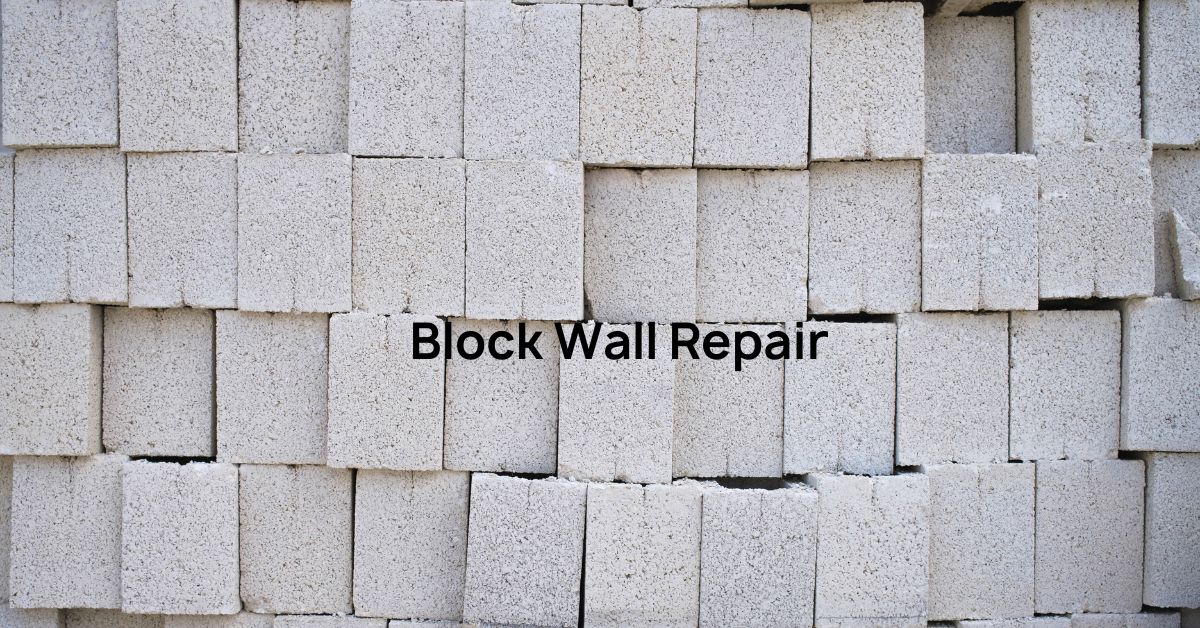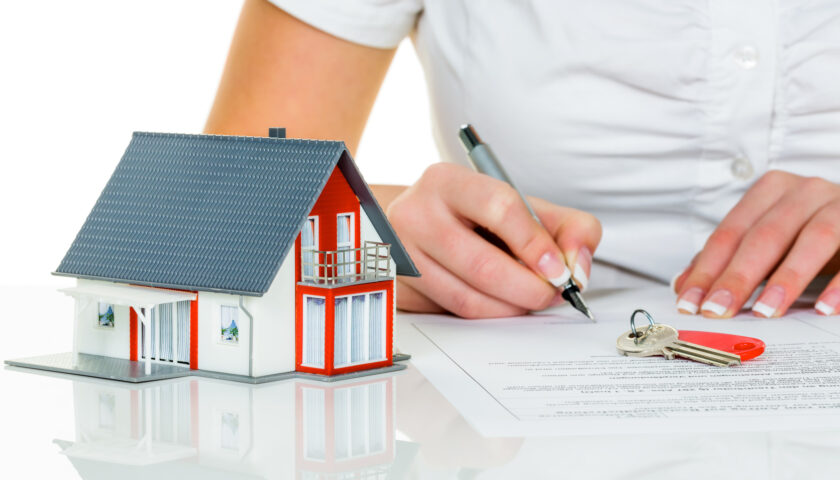Block walls are a common feature in many homes, providing both structural support and aesthetic appeal. However, over time, these walls can develop issues that require attention. In this comprehensive guide, we’ll explore everything you need to know about block wall repair, from identifying common problems to implementing effective solutions.
1. Introduction to Block Wall Repair
1.1 Understanding Block Walls
Block walls, also known as concrete masonry units (CMUs), are constructed using individual blocks made of concrete or other materials. These blocks are stacked and held together with mortar to form a sturdy wall structure.
1.2 Common Issues with Block Walls
While block walls are durable, they can still experience wear and tear over time. Some of the most common issues include cracking, bowing, and water damage, which can compromise the integrity of the wall if left untreated.
2. Signs of Block Wall Damage
2.1 Visible Cracks
One of the most obvious signs of block wall damage is the presence of visible cracks. These cracks may start small but can widen over time, leading to structural instability.
2.2 Bulging or Bowing
Bulging or bowing in the block wall is another indication of underlying issues. This occurs when pressure from the surrounding soil or water causes the wall to deform, compromising its strength.
2.3 Water Damage
Water damage can also wreak havoc on block walls, causing erosion of the mortar joints and weakening the overall structure. Signs of water damage include efflorescence (white, powdery residue) and dampness.
3. Assessing the Damage
3.1 Inspection Process
Before beginning any repair work, it’s essential to thoroughly inspect the block wall to assess the extent of the damage. Look for cracks, bulges, and signs of water infiltration, both on the surface and inside the wall.
3.2 Consulting Professionals
If you’re unsure about the severity of the damage or the appropriate repair techniques, consider consulting with a professional contractor or structural engineer. They can provide expert advice and recommend the best course of action.
4. DIY Block Wall Repair Techniques
4.1 Patching Small Cracks
For minor cracks in the block wall, patching can be a relatively simple DIY repair. Use a concrete patching compound to fill in the cracks, smoothing it out with a trowel for a seamless finish.
4.2 Reinforcing Weak Spots
To reinforce weak spots in the block wall, consider adding steel reinforcement bars (rebar) or epoxy injections. These materials can help strengthen the wall and prevent further damage.
4.3 Sealing Waterproofing
To prevent water damage, apply a waterproofing sealer to the exterior surface of the block wall. This will help repel moisture and protect the wall from future deterioration.
5. Professional Block Wall Repair Services
5.1 Structural Reinforcement
For more serious structural issues, such as extensive cracking or bowing, professional repair services may be necessary. Structural reinforcement techniques, such as installing steel braces or carbon fiber strips, can help stabilize the wall and prevent further damage.
5.2 Crack Injection
In cases where cracks are allowing water to infiltrate the wall, professional crack injection may be required. This involves injecting epoxy or polyurethane resin into the cracks to seal them and prevent water penetration.
5.3 Complete Reconstruction
In extreme cases where the block wall is beyond repair, complete reconstruction may be the only option. This involves demolishing the existing wall and rebuilding it from scratch using new materials.
6. Cost Considerations
6.1 DIY vs. Professional Costs
When considering block wall repair costs, weigh the expenses of DIY repairs against hiring professionals. While DIY repairs may be cheaper upfront, professional services often provide more comprehensive solutions and long-term stability.
6.2 Material Expenses
Factor in the cost of materials when budgeting for block wall repairs. This includes concrete patching compound, waterproofing sealers, and any additional reinforcement materials required for the job.
6.3 Long-Term Investment
Ultimately, investing in quality block wall repairs is a long-term investment in the integrity and value of your property. By addressing issues promptly and effectively, you can avoid costly repairs down the line and ensure the longevity of your block wall.
7. Preventative Maintenance Tips
7.1 Regular Inspections
To prevent block wall damage, conduct regular inspections of the wall’s condition. Look for signs of cracking, bulging, or water damage, and address any issues promptly to prevent further deterioration.
7.2 Proper Drainage
Ensure proper drainage around the perimeter of the block wall to prevent water from pooling and causing damage. Install French drains or gutters to redirect water away from the wall and maintain proper grading to encourage water runoff.
7.3 Routine Maintenance
Perform routine maintenance tasks, such as cleaning debris from the wall surface and repairing minor cracks, to keep your block wall in good condition. By staying proactive, you can extend the life of your wall and minimize the need for extensive repairs.
8. Conclusion
Block wall repair is a vital aspect of maintaining the structural integrity and appearance of your property. By identifying signs of damage early, assessing the extent of the issues, and implementing appropriate repair techniques, you can ensure the longevity of your block wall for years to come.
FAQs (Frequently Asked Questions)
1. How do I know if my block wall needs repair?
Several signs indicate that your block wall may need repair:
- Visible Cracks: Look for cracks in the wall’s surface, especially those that are widening or extending deeper into the structure.
- Bulging or Bowing: If you notice any areas where the wall appears to be bulging outward or bowing inward, it could indicate underlying structural issues.
- Water Damage: Signs of water damage, such as efflorescence (white, powdery residue) or dampness, suggest that water is infiltrating the wall and causing deterioration.
If you observe any of these signs, it’s essential to inspect the wall thoroughly and consider consulting with a professional to assess the extent of the damage.
2. Can I repair small cracks in my block wall myself?
Yes, you can repair small cracks in your block wall yourself using DIY methods:
- Clean the Area: Begin by cleaning the crack and removing any debris or loose material.
- Apply Patching Compound: Fill the crack with a concrete patching compound, using a trowel to smooth it out and ensure a seamless finish.
- Allow to Cure: Allow the patching compound to cure according to the manufacturer’s instructions before painting or applying a waterproofing sealer.
For larger or more extensive cracks, or if you’re unsure about the repair process, consider consulting with a professional.
3. How much does professional block wall repair cost?
The cost of professional block wall repair can vary depending on several factors:
- Extent of Damage: The severity and extent of the damage will influence the cost of repairs.
- Repair Techniques: Different repair techniques, such as structural reinforcement or crack injection, have varying costs.
- Materials Used: The cost of materials, including reinforcement materials and waterproofing sealers, will contribute to the overall expense.
- Labor Costs: The rates charged by contractors or repair professionals for their services will also affect the total cost.
It’s best to obtain quotes from multiple professionals to compare costs and ensure you’re getting a fair price for the necessary repairs.
4. Is it possible to prevent block wall damage?
While it’s not always possible to prevent block wall damage entirely, there are steps you can take to minimize the risk:
- Regular Inspections: Conduct regular inspections of the block wall to identify any signs of damage early and address them promptly.
- Proper Drainage: Ensure proper drainage around the wall to prevent water from pooling and causing water damage.
- Routine Maintenance: Perform routine maintenance tasks, such as cleaning debris from the wall surface and repairing minor cracks, to keep the wall in good condition.
By staying proactive and addressing issues as they arise, you can minimize the likelihood of extensive damage to your block wall.
5. What are the long-term benefits of investing in block wall repair?
Investing in block wall repair offers several long-term benefits:
- Structural Integrity: Repairing damage to the block wall ensures its structural integrity, preventing further deterioration and potential collapse.
- Property Value: Maintaining a well-maintained block wall can enhance the overall value and curb appeal of your property.
- Prevent Further Damage: Addressing issues promptly can prevent minor issues from escalating into more significant problems, saving you time and money in the long run.
- Peace of Mind: Knowing that your block wall is in good condition provides peace of mind and reassurance that your property is safe and secure.





